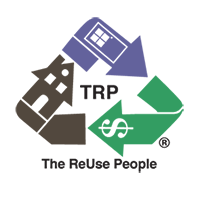TRP hasn’t put out an e-letter (aka The Velvet Crowbar) since June 2018, so I need to start this re-launch with two business updates. First, in case you hadn’t heard, the rumors of my 2018 retirement were greatly exaggerated. Well, okay, the retirement happened but was short-lived. I was back as president of TRP in April of 2019.
The other big change was the termination of TRP’s own deconstruction division. Soon after TRP began to ramp up its deconstruction training for workers, contractors, and the general public, we realized that it would be a mistake to compete with the Bay Area TRP-certified deconstruction contractors (CDCs) we ourselves trained. So, in 2019, we dissolved the deconstruction division and transferred all deconstruction personnel and assets to Marcan Enterprises, our first CDC. To date, the move has worked out very well.
Now, let’s talk about you …
Stuck at home during the pandemic, you may have decided to take on various needed, and probably delayed projects. High on the list of COVID-fostered enterprises is the construction of backyard offices, garden houses, play and schooling shelters for kids, and alternative dwelling units (ADUs). I recently spoke with a craftsman and TRP customer who started a business building ADUs a couple of years ago. He reported being booked solid through May of 2021. And a local Home Depot claims to have sold more prebuilt sheds in the past six months than they normally sell in a year.
The Wall Street Journal recently published an article entitled, “Behold the Sanity Shed.” Featured were places to garden, knit, paint or draw, or even work (yes, work keeps some folks sane). The article included photos and measurements for four such units, including a modest 8x12-foot garden shed and a 12x24-foot office with a front porch. The prices ranged from $9,850 to $31,500.
I browsed through the TRP Oakland warehouse, solicited some excellent advice from Retail Manager Brandy Sosa and came up with prices using comparable salvaged materials. Total materials cost (including paint from a retail store) would be $1,500 to $1,800 for the 8x12 unit and $2,500 to $3,000 for the larger unit, not including electric or plumbing. Add the cost of labor if you don’t want to do the work yourself. Two skilled tradespeople could complete the small unit in five to seven days and the larger one in 10 to12 days. Throw in $300 for truck rental and you still save at least $2,500 on the small unit and almost $15,000 on the larger one (with that kind of savings, you could electrify and plumb the place and still save $5,000 to $8,000).
But listen, the greatest benefit would probably come from building the unit yourself, even if you are not a builder pr carpenter. I’ve read that tackling something completely different for a short period of time is good therapy. Come into the TRP warehouse, walk around and give your imagination free reign. Then do a rough sketch. We can help you fill in the details.
P.S. This marks the re-birth of TRP’s monthly e-letters. As always, I encourage you to send me your comments and suggestions for topics relevant to our growing industry.
